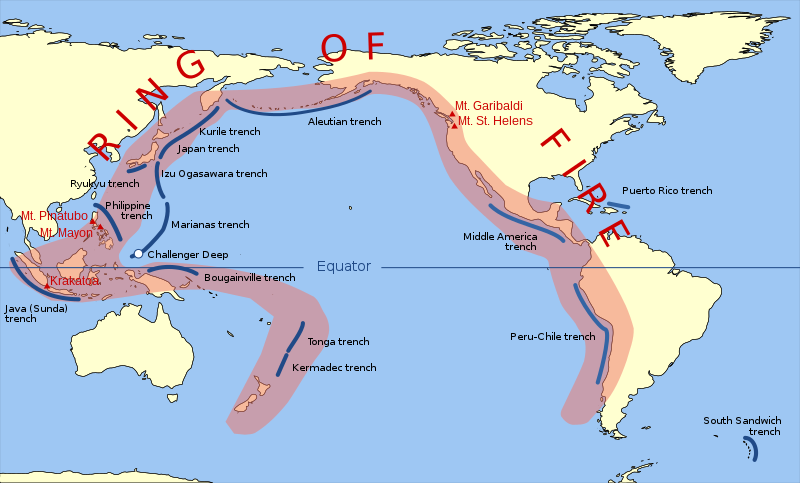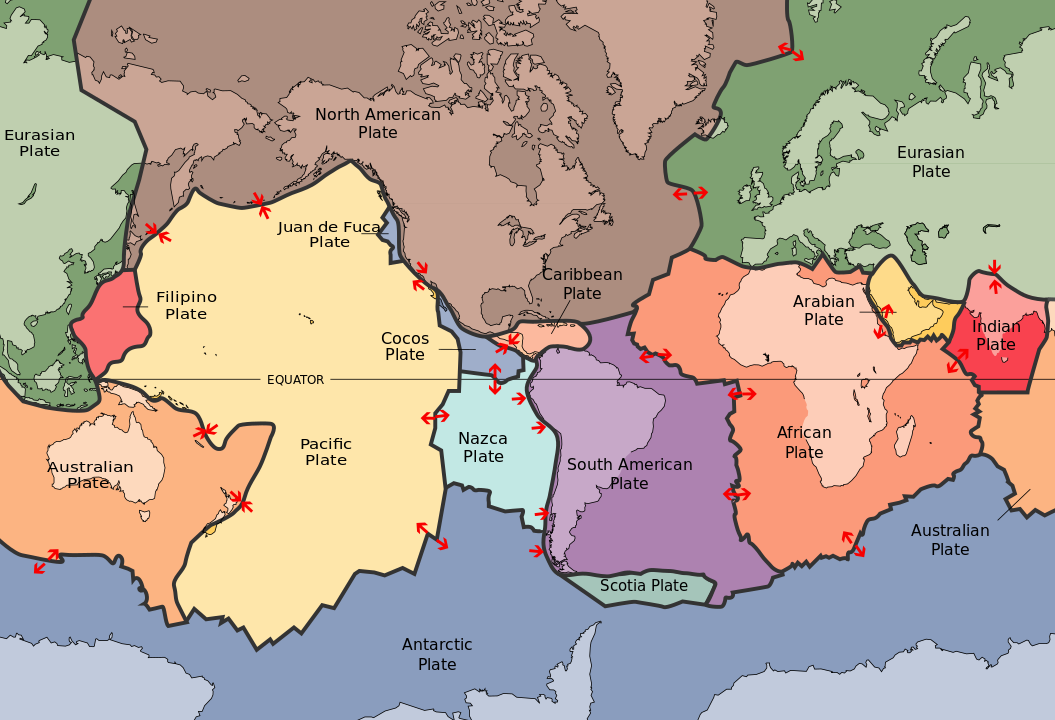This Saturday, clear skies permitting, millions of people across North America will look up to see the Moon edged with what is termed a “ring of fire”. However, there is a much more long-standing ring of fire (in addition to the one Johnny Cash sang about). It surrounds the Pacific Ocean, and includes the most threatening volcanoes and earthquake fault zone on the planet.
The Earthly Ring of Fire outlines the Pacific Ocean. It represents the places where continental tectonic plates ride over the Pacific or Nazca Plate, or where two plates scrape against each other as they shift in opposite directions.
Unlike the outer edges of the Sun, the Pacific “Ring of Fire” is far from a perfect ring. In particular, it makes a sharp dog-leg around Australia’s northern and eastern plate boundaries. There is also an absence of activity at the ocean’s southern edge, where the plate meets Antarctica, although some geologists include the Antarctic Peninsula. It’s also not terribly fiery, since the heat from volcanoes does not come from the oxidation of fuel, although lava from volcanic eruptions can start forest fires in the right circumstances.

The exact boundaries of the Ring of Fire are debatable, but most of the world’s active volcanoes are in the red regions.
Although the broad processes that cause the Ring of Fire are consistent all the way round, the interactions involve five bordering continental plates. These bordering plates are moving at different speeds and have their individual natures, so the mix of volcanic and seismic activity is not the same all the way round.
All that being said, one may ask why the “Ring of Fire” is considered to be a thing at all. The reason is that activity around the ring far outweighs anything anywhere else on the planet.
Of the volcanoes known to have been active since the end of the last Ice Age, some two thirds are in the Ring of Fire, and almost half of these have erupted recently enough to be recorded, something that doesn’t go back very far in some places.

Most of the Ring of Fire involves collisions between the Pacific Plate and its neighbors, but in South America it is the Nazca Plate that is being overridden to push up the Andes.
Image credit: USGS
Not all volcanoes are equally threatening however. The biggest problems come from those that explode seldom, but with great force. In the last 10,000 years there are thought to have been 13 eruptions that ranked a 7 on the volcanic explosivity index (VEI). Of these, 11 were in the Ring of Fire and one, which caused the volcanic winter of 536, has not been identified. If a calamitous eruption is to happen in our lifetimes, the odds are it will be in the Ring of Fire.
Such an eruption would not only be catastrophic in the local area, but could cause global famines by throwing up so much ash and sulfur dioxide that the planet is drastically cooled for many months. This occurred in the Year Without Summer unleashed by Mount Tambora in 1815.
VEI 7 eruptions may only happen once every 800 years or so, but smaller ones can still be locally devastating, and in a connected world the effects can ripple. The eruption of Krakatoa in 1883 caused at least 36,000 deaths, mostly through the tsunamis it generated. The population of the area today is many times larger than it was then, and even with better warnings the consequences of a repeat are hard to contemplate.
We do have a precedent, however, not in an eruption but from an earthquake. The 2004 Boxing Day Sumatra earthquake unleashed tsunamis that killed an estimated quarter of a million people. Geologists debate whether western Indonesia belongs to the Ring of Fire but some include it. Moreover, the other four earthquakes of magnitude 9 or above have all occurred on the Ring of Fire. Some of these, such as the 1964 Alaskan Earthquake, have taken place in relatively unpopulated areas, mitigating the consequences. Yet even in these cases, people died thousands of kilometers away in the resulting tsunamis.
When its volcanoes erupt the Pacific Ring of Fire can put on a show that can almost match an annular eclipse, but it also gives us plenty of reasons to worry.
Source Link: What Is The “Ring Of Fire” And Should We Be Concerned?